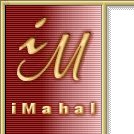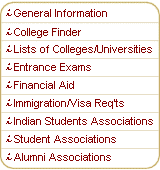 |
|
General Information about the UK
Location: Western Europe, islands including the northern one-sixth of the island of Ireland between the North Atlantic Ocean and the North Sea, northwest of France 
Geographic coordinates: 54 00 N, 2 00 W Map references: Europe
Area:
Area—comparative: slightly smaller than Oregon
Land boundaries:
Coastline: 12,429 km
Maritime claims:
Climate: temperate; moderated by prevailing southwest winds over the North Atlantic Current; more than one-half of the days are overcast Terrain: mostly rugged hills and low mountains; level to rolling plains in east and southeast
Elevation extremes:
Natural resources: coal, petroleum, natural gas, tin, limestone, iron ore, salt, clay, chalk, gypsum, lead, silica
Land use:
Irrigated land: 1,080 sq km (1993 est.) Natural hazards: NA Environment—current issues: sulfur dioxide emissions from power plants contribute to air pollution; some rivers polluted by agricultural wastes; and coastal waters polluted because of large-scale disposal of sewage at sea
Environment—international agreements:
Geography—note: lies near vital North Atlantic sea lanes; only 35 km from France and now linked by tunnel under the English Channel; because of heavily indented coastline, no location is more than 125 km from tidal waters Population: 59,113,439 (July 1999 est.)
Age structure:
Population growth rate: 0.24% (1999 est.) Birth rate: 11.9 births/1,000 population (1999 est.) Death rate: 10.64 deaths/1,000 population (1999 est.) Net migration rate: 1.11 migrant(s)/1,000 population (1999 est.)
Sex ratio:
Infant mortality rate: 5.78 deaths/1,000 live births (1999 est.)
Life expectancy at birth:
Total fertility rate: 1.71 children born/woman (1999 est.)
Nationality:
Ethnic groups: English 81.5%, Scottish 9.6%, Irish 2.4%, Welsh 1.9%, Ulster 1.8%, West Indian, Indian, Pakistani, and other 2.8% Religions: Anglican 27 million, Roman Catholic 9 million, Muslim 1 million, Presbyterian 800,000, Methodist 760,000, Sikh 400,000, Hindu 350,000, Jewish 300,000 (1991 est.) Languages: English, Welsh (about 26% of the population of Wales), Scottish form of Gaelic (about 60,000 in Scotland)
Literacy:
Country name:
Data code: UK Government type: constitutional monarchy Capital: London
Administrative divisions:
47 counties, 7 metropolitan counties, 26 districts, 9 regions, and 3
islands areas; England—39 counties, 7 metropolitan counties*; Avon,
Bedford, Berkshire, Buckingham, Cambridge, Cheshire, Cleveland, Cornwall,
Cumbria, Derby, Devon, Dorset, Durham, East Sussex, Essex, Gloucester,
Greater London*, Greater Manchester*, Hampshire, Hereford and Worcester,
Hertford, Humberside, Isle of Wight, Kent, Lancashire, Leicester, Lincoln,
Merseyside*, Norfolk, Northampton, Northumberland, North Yorkshire,
Nottingham, Oxford, Shropshire, Somerset, South Yorkshire*, Stafford,
Suffolk, Surrey, Tyne and Wear*, Warwick, West Midlands*, West Sussex, West
Yorkshire*, Wiltshire; Northern Ireland—26 districts; Antrim, Ards,
Armagh, Ballymena, Ballymoney, Banbridge, Belfast, Carrickfergus,
Castlereagh, Coleraine, Cookstown, Craigavon, Down, Dungannon, Fermanagh,
Larne, Limavady, Lisburn, Londonderry, Magherafelt, Moyle, Newry and
Mourne, Newtownabbey, North Down, Omagh, Strabane; Scotland—9 regions, 3
islands areas*; Borders, Central, Dumfries and Galloway, Fife, Grampian,
Highland, Lothian, Orkney*, Shetland*, Strathclyde, Tayside, Western
Isles*; Wales—8 counties; Clwyd, Dyfed, Gwent, Gwynedd, Mid Glamorgan,
Powys, South Glamorgan, West Glamorgan
Dependent areas: Anguilla, Bermuda, British Indian Ocean Territory, British Virgin Islands, Cayman Islands, Falkland Islands, Gibraltar, Guernsey, Jersey, Isle of Man, Montserrat, Pitcairn Islands, Saint Helena, South Georgia and the South Sandwich Islands, Turks and Caicos Islands Independence: England has existed as a unified entity since the 10th century; the union between England and Wales was enacted under the Statute of Rhuddlan in 1284; in the Act of Union of 1707, England and Scotland agreed to permanent union as Great Britain; the legislative union of Great Britain and Ireland was implemented in 1801, with the adoption of the name the United Kingdom of Great Britain and Ireland; the Anglo-Irish treaty of 1921 formalized a partition of Ireland; six northern Irish counties remained part of the United Kingdom as Northern Ireland and the current name of the country, the United Kingdom of Great Britain and Northern Ireland, was adopted in 1927 National holiday: Celebration of the Birthday of the Queen (second Saturday in June) Constitution: unwritten; partly statutes, partly common law and practice Legal system: common law tradition with early Roman and modern continental influences; no judicial review of Acts of Parliament; accepts compulsory ICJ jurisdiction, with reservations; British courts and legislation are increasingly subject to review by European Union courts Suffrage: 18 years of age; universal
Executive branch:
Legislative branch:
bicameral Parliament consists of House of Lords (1,200 seats; four-fifths
of the members are hereditary peers, two archbishops, 24 other senior
bishops, serving and retired Lords of Appeal in Ordinary, other life peers,
Scottish peers) and House of Commons (659 seats; members are elected by
popular vote to serve five-year terms unless the House is dissolved
earlier)
Judicial branch: House of Lords, several Lords of Appeal in Ordinary are appointed by the monarch for life Political parties and leaders: Conservative and Unionist Party [William HAGUE]; Labor Party [Anthony (Tony) Blair]; Liberal Democrats [Jeremy (Paddy) ASHDOWN]; Scottish National Party [Alex SALMOND]; Welsh National Party (Plaid Cymru) [Dafydd Iwan WIGLEY]; Ulster Unionist Party (Northern Ireland) [David TRIMBLE]; Democratic Unionist Party (Northern Ireland) [Rev. Ian PAISLEY]; Social Democratic and Labor Party or SDLP (Northern Ireland) [John HUME]; Sinn Fein (Northern Ireland) [Gerry ADAMS]; Alliance Party (Northern Ireland) [Seamus CLOSE] Political pressure groups and leaders: Trades Union Congress; Confederation of British Industry; National Farmers' Union; Campaign for Nuclear Disarmament International organization participation: AfDB, AsDB, Australia Group, BIS, C, CCC, CDB (non-regional), CE, CERN, CP, EAPC, EBRD, ECA (associate), ECE, ECLAC, EIB, ESA, ESCAP, EU, FAO, G- 5, G- 7, G-10, IADB, IAEA, IBRD, ICAO, ICC, ICFTU, ICRM, IDA, IEA, IFAD, IFC, IFRCS, IHO, ILO, IMF, IMO, Inmarsat, Intelsat, Interpol, IOC, IOM (observer), ISO, ITU, MTCR, NATO, NEA, NSG, OAS (observer), OECD, OPCW, OSCE, PCA, UN, UN Security Council, UNCTAD, UNESCO, UNFICYP, UNHCR, UNIDO, UNIKOM, UNMIBH, UNOMIG, UNOMSIL, UNRWA, UNU, UPU, WCL, WEU, WHO, WIPO, WMO, WTrO, ZC
Diplomatic representation in the US:
Diplomatic representation from the US:
Economy—overview: The UK is one of the world's great trading powers and financial centers, and its essentially capitalistic economy ranks among the four largest in Western Europe. Over the past two decades the government has greatly reduced public ownership and contained the growth of social welfare programs. Agriculture is intensive, highly mechanized, and efficient by European standards, producing about 60% of food needs with only 1% of the labor force. The UK has large coal, natural gas, and oil reserves; primary energy production accounts for 10% of GDP, one of the highest shares of any industrial nation. Services, particularly banking, insurance, and business services, account by far for the largest proportion of GDP while industry continues to decline in importance, now employing only 18% of the work force. Economic growth is slowing, and Britain may experience a short recession in 1999. As a result, unemployment probably will begin to rise again. The BLAIR government has put off the question of participation in the euro system until after the next election, not expected until 2001, but Chancellor of the Exchequer BROWN is committed to preparing the British economy for eventual membership. GDP: purchasing power parity—$1.252 trillion (1998 est.) GDP—real growth rate: 2.6% (1998 est.) GDP—per capita: purchasing power parity—$21,200 (1998 est.)
GDP—composition by sector:
Population below poverty line: 17%
Household income or consumption by percentage share:
Inflation rate (consumer prices): 2.7% (1998) Labor force: 28.8 million (1998) Labor force—by occupation: services 68.9%, manufacturing and construction 17.5%, government 11.3%, energy 1.2%, agriculture 1.1% (1996) Unemployment rate: 7.5% (1998 est.)
Budget:
Industries: production machinery including machine tools, electric power equipment, automation equipment, railroad equipment, shipbuilding, aircraft, motor vehicles and parts, electronics and communications equipment, metals, chemicals, coal, petroleum, paper and paper products, food processing, textiles, clothing, and other consumer goods Industrial production growth rate: 0.5% (1998 est.) Electricity—production: 309.672 billion kWh (1996)
Electricity—production by source:
Electricity—consumption: 326.322 billion kWh (1996) Electricity—exports: 0 kWh (1996) Electricity—imports: 16.65 billion kWh (1996) Agriculture—products: cereals, oilseed, potatoes, vegetables; cattle, sheep, poultry; fish Exports: $271 billion (f.o.b., 1998) Exports—commodities: manufactured goods, fuels, chemicals; food, beverages, tobacco Exports—partners: EU countries 56% (Germany 12%, France 10%, Netherlands 8%), US 12% (1997) Imports: $304 billion (f.o.b., 1998) Imports—commodities: manufactured goods, machinery, fuels, foodstuffs Imports—partners: EU countries 53% (Germany 14%, France 10%, Netherlands 7%, Ireland 5%), US 13% (1997) Debt—external: $NA Economic aid—donor: ODA, $3.4 billion (1996) Currency: 1 British pound (£) = 100 pence Exchange rates: British pounds (£) per US$1—0.6057 (January 1999), 0.6037 (1998), 0.6106 (1997), 0.6403 (1996), 0.6335 (1995), 0.6529 (1994) Fiscal year: 1 April—31 March Telephones: 29.5 million (1987 est.)
Telephone system:
technologically advanced domestic and international system
Radio broadcast stations: AM 225, FM 525 (mostly repeaters), shortwave 0 Radios: 70 million Television broadcast stations: 78 (in addition, there are 869 repeaters) (1997) Televisions: 20 million
Railways:
Highways:
Waterways: 3,200 km Pipelines: crude oil (almost all insignificant) 933 km; petroleum products 2,993 km; natural gas 12,800 km Ports and harbors: Aberdeen, Belfast, Bristol, Cardiff, Dover, Falmouth, Felixstowe, Glasgow, Grangemouth, Hull, Leith, Liverpool, London, Manchester, Peterhead, Plymouth, Scapa Flow, Sullom Voe, Tees, Tyne
Merchant marine:
Airports: 497 (1998 est.)
Airports—with paved runways:
Airports—with unpaved runways:
Heliports: 12 (1998 est.) Military branches: Army, Royal Navy (includes Royal Marines), Royal Air Force
Military manpower—availability:
Military manpower—fit for military service:
Military expenditures—dollar figure: $36.7 billion (FY98/99) Military expenditures—percent of GDP: 2.6% (FY98/99) Disputes—international: Northern Ireland issue with Ireland (historic peace agreement signed 10 April 1998); Gibraltar issue with Spain; Argentina claims Falkland Islands (Islas Malvinas); Argentina claims South Georgia and the South Sandwich Islands; Mauritius claims island of Diego Garcia in British Indian Ocean Territory; Rockall continental shelf dispute involving Denmark, Iceland, and Ireland (Ireland and the UK have signed a boundary agreement in the Rockall area); territorial claim in Antarctica (British Antarctic Territory); Seychelles claims Chagos Archipelago in British Indian Ocean Territory Illicit drugs: gateway country for Latin American cocaine entering the European market; producer and major consumer of synthetic drugs, synthetic precursor chemicals; transshipment point for Southwest Asian heroin; money-laundering center

|
 |
|||||||||||||||||||||||||||||||||
|
 |
|||||


